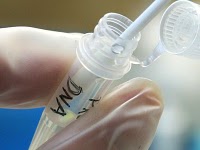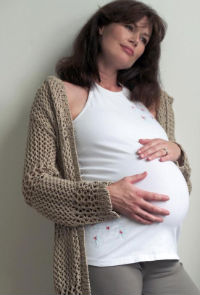Article source: http://feedproxy.google.com/~r/CaliforniaIvfDavisFertilityCenterInc/~3/h3kbARxwMxQ/pre-implantation-genetic-diagnosis-of.html
Tag Archives: PGD
Northern California Fertility Doctor Joins Genetic Testing Clinical Study to Help Roseville and Sacramento IVF Infertility Patients Get Pregnant
 Getting pregnant using fertility treatments like in vitro fertilization is stressful for any couple. But for couples in which one or both partners has the potential of having a child with a genetically based disease like Tay Sachs or Gaucher’s disease can be frightening. A new genetic screening under clinical study gives at-risk IVF patients a fuller glimpse of their developing embryos.
Getting pregnant using fertility treatments like in vitro fertilization is stressful for any couple. But for couples in which one or both partners has the potential of having a child with a genetically based disease like Tay Sachs or Gaucher’s disease can be frightening. A new genetic screening under clinical study gives at-risk IVF patients a fuller glimpse of their developing embryos.
Until now, IVF patients have had to choose between testing for chromosome abnormalities like Down Syndrome or single-gene hereditary disorders like Tay Sachs. A new screening from Redwood City, Calif. based Gene Security Network combines single gene hereditary disease testing and a 24-chromosome comparison into one test.
Dr. Ernest Zeringue, founder of California IVF: Davis Fertility Center, Inc. says “this test will offer at risk couples an additional tool for increasing their chance of pregnancy while minimizing the risk of having a baby with a genetic disorder.”
While new technology can not completely relieve the worries of getting pregnant, this next step in the genetic testing of embryos will help at risk patients make more informed decisions about their best options for bringing home a healthy baby.
Article source: http://feedproxy.google.com/~r/CaliforniaIvfDavisFertilityCenterInc/~3/VHLhG6cwPf4/northern-california-fertility-doctor.html
Pregnancy Success Rates May Improve With Genetic Testing of Day 5 Embryos
 The “buzz” at the ASRM Annual Meeting in Denver, October 2010, was biopsy of Day 5 (blastocyst) embryos with subsequent genetic analysis. Current embryo biopsy techniques focus on Day 3 embryos for pre-implantation genetic testing (PGD) of embryos.
The “buzz” at the ASRM Annual Meeting in Denver, October 2010, was biopsy of Day 5 (blastocyst) embryos with subsequent genetic analysis. Current embryo biopsy techniques focus on Day 3 embryos for pre-implantation genetic testing (PGD) of embryos.
Day 3 embryos are usually composed of 6-8 cells, and one cell is removed, fixed to a slide, and analyzed in the lab. Having only one cell to work with, though, can be a negative in several ways. Firstly, there’s always the chance that the material from one cell will not be enough to provide a sample for analysis. Secondly, there is the somewhat complicated issue of mosaicism.
As cells grow and divide, genetic mistakes can happen. Since the embryo is made up of several different dividing cells, it’s possible that some of the cells divide normally, while some of them create genetic mistakes during their division.
The result can be a mosaic embryo—one that has some normal cells and some genetically abnormal ones. The concern with embryo biopsy on Day 3 is that with removing only one cell, how do you know that all the other cells have the same genetic makeup?
Studies show that embryos that make genetic mistakes have a high tendency to correct themselves by the time they reach the blastocyst (Day 5) stage. In other words, the normal cells continue to grow and divide, forming a healthy embryo, and the genetically abnormal cells disperse. This phenomenon is called self-correction. So a significant concern with Day 3 embryo biopsy is that a single cell can be analyzed and identified as abnormal, leading to discarding of that embryo, while in fact, it could undergo the process of self-correction, leading to the discard of a perfectly fine embryo.
Day 5 embryo biopsy has definite advantages over Day 3 biopsy. Day 5 embryos generally have 100-150 cells, so usually 10-15 cells can be removed without harm. This allows a larger sample to test. The test is also run at the later, Day 5, stage, which allows for self-correction to happen. Also, by the time the embryo reaches the Day 5 stage, it has formed two separate structures: the inner cell mass, which can become a baby; and the trophectoderm, the outer cells which will form the placenta. The cells removed in the biopsy come from the trophectoderm, leaving the inner cell mass intact.
 The major disadvantage of Day 5 biopsy is in the time it takes to run the genetic tests. The blastocyst stage is when the embryo would begin to burrow in and implant in a woman’s uterus. So by the team an embryo reaches blastocyst stage in the lab, it can only be transferred into a uterus or frozen for storage. Genetic testing may take several days, so an embryo that is biopsied on Day 5 must be frozen until the results are available. This would involve a scheduled future transfer of the normal embryo in another cycle, after preparing the uterus with hormones. Fortunately, improvement in embryo freezing techniques, primarily the use of vitrification, has made this option a successful alternative. It was revealed at the 2010 ASRM Annual Meeting that some centers are also working to shorten the time the diagnostic testing takes, so that the biopsy could be done early on Day 5 and allow transfer early in the morning the following day, with excellent pregnancy rates.
The major disadvantage of Day 5 biopsy is in the time it takes to run the genetic tests. The blastocyst stage is when the embryo would begin to burrow in and implant in a woman’s uterus. So by the team an embryo reaches blastocyst stage in the lab, it can only be transferred into a uterus or frozen for storage. Genetic testing may take several days, so an embryo that is biopsied on Day 5 must be frozen until the results are available. This would involve a scheduled future transfer of the normal embryo in another cycle, after preparing the uterus with hormones. Fortunately, improvement in embryo freezing techniques, primarily the use of vitrification, has made this option a successful alternative. It was revealed at the 2010 ASRM Annual Meeting that some centers are also working to shorten the time the diagnostic testing takes, so that the biopsy could be done early on Day 5 and allow transfer early in the morning the following day, with excellent pregnancy rates.
About Dr. Laurie Lovely:
Sacramento Infertility Specialist Dr. Laurie Lovely is board certified by the American Board of Obstetrics and Gynecology (ABOG) in both Obstetrics and Gynecology and Reproductive Endocrinology and Infertility. She has received a research grant from the American College of Obstetricians and Gynecologists for her work on the effects of hormones and the endometrial lining. She presented a prize-winning paper on the effects of stress and infertility at an annual meeting of the American Society for Reproductive Medicine. Additional professional interests include pubertal problems and reconstructive tubal surgery including tubal ligation reversals.
Article source: http://feedproxy.google.com/~r/CaliforniaIvfDavisFertilityCenterInc/~3/xWEFsDYTZUI/pregnancy-success-rates-may-improve.html
Sacramento Fertility Center Specialists Explore Advances In Infertility Treatment at ASRM
Sacramento infertility specialists Dr. Laurie Lovely and Dr. Ernest Zeringue attended the annual meeting for the American Society for Reproductive Medicine, or ASRM in Denver Colorado. This meeting is a gathering point for scientists and clinical practitioners from fertility practices worldwide. Clinics and researchers share their techniques and scientific discoveries for the purpose of advancing the field of reproductive medicine. This sharing of ideas usually serves as valuable means of evaluating developing techniques and technology, and often leads to the introduction of new treatment options for infertility patients.
There have been many exciting advancements in the infertility treatment arena. The two most notable topics are oocyte preservation, or egg freezing for the purpose of saving a woman’s fertility for the future, and pre-implantation genetic diagnosis and screening (PGD/PGS). Both egg freezing and PGD/PGS advancements will offer immediate changes in the way infertility treatments are rendered. California IVF: Davis Fertility Center, Inc. is at the forefront of these new technologic developments as we continue to bring our patents the latest and most advanced options for overcoming infertility.
Pre-implantation genetic screening PGS is used when embryos are tested for the presence of a genetic abnormality such as an abnormal number of chromosomes. Pre-implantation genetic diagnosis, PGD, is used when there is a known risk of a specific genetic disease when there is a family history of a specific genetic disease. PGD is often used to refer to both PGD and PGD services collectively, although this is technically inaccurate. PGD/PGS has been used for several years, but the limitations of the technology and the types of genetic tests available for infertility treatments has been a limiting factor in the success of the testing. High costs of the tests have also limited the use of the testing in addition to in vitro fertilization, IVF.
Recent advancements in PGD/PGS has allowed fertility clinics to move away from FISH and embrace SNP and aCHG for genetic screening of embryos. These newer tests have the advantage over existing FISH technologies in that SNP and aCGH can look at all chromosome pairs. There are 23 pairs of chromosomes with one pair used for sex determination. A test will look for 24 chromosomes, 22 normal pairs of chromosomes plus the X and Y chromosomes which determine if the baby will be a boy or a girl. Testing for X and Y chromosomes has also been useful for gender selection – determining a boy or girl with IVF before the embryo is used to make a pregnancy.
Refinements to the PGD/PGS process were presented at ASRM. These latest changes will likely lead to an increase in the number of PGD/PGS cases performed in the United States. By performing the embryo biopsy on day 5 using a laser and a precision microscope, the genetic test results have a higher prediction rate of a normal pregnancy than a biopsy performed on day 3. Several researchers and infertility clinics reported pregnancy rates as high as 85 to 90% when PGD/PGS was used on a day 5 embryo. While these are early studies and need additional verification, it seems very clear that the future of embryo biopsy and genetic testing is about to make a significant change to the field of in vitro fertilization.
The addition of day 5 embryo biopsy and genetic testing advances our capabilities and improves upon our 5 year experience with genetic testing and embryo biopsy. Having egg freezing capabilities opens the doors for new avenues in donor egg banking, making the process of egg donation and infertility treatments with donor eggs less complicated. Freezing eggs also offers a women the opportunity to save her fertility in the face of cancer treatments such as chemotherapy or radiation therapy. Oocyte cryopreservation will soon offer women the opportunity to preserve their fertility for a later time in life when her own chances of conceiving may be reduced due to the effect of age on egg quality.
Thanks to the scientific community and professional sharing of knowledge and scientific study, ASRM members can remain up to date with the latest changes. California IVF: Davis Fertility Center, Inc. continues to change our practice as new developments become available. To this end, many fertility centers and patients and indebted to the efforts of ASRM. According to the ASRM website, the Vision of the American Society for Reproductive Medicine (ASRM) is to be the nationally and internationally recognized leader for multidisciplinary information, education, advocacy and standards in the field of reproductive medicine. The ASRM is a non-profit organization whose members must demonstrate the high ethical principles of the medical profession, evidence an interest in infertility, reproductive medicine and biology, and adhere to the objectives of the Society.
Dr. Laurie Lovely and Dr. Ernest Zeringue are proud members of ASRM and will continue to leverage the knowledge and research benefits of ASRM to realize the goals and dreams of our patients – having a baby.

